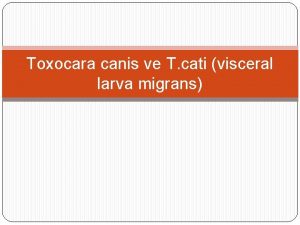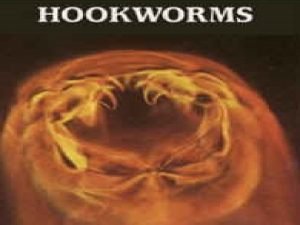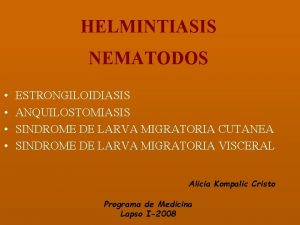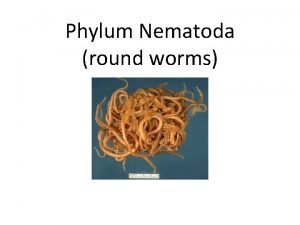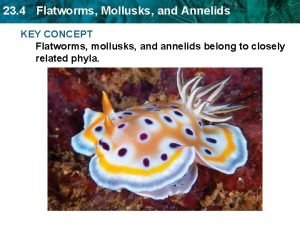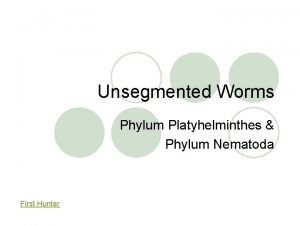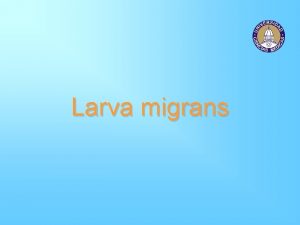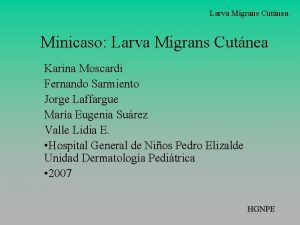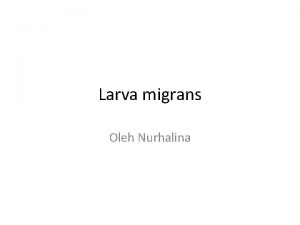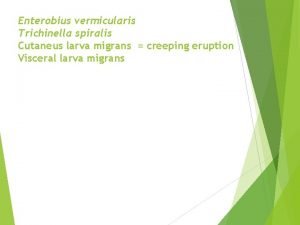Roundworms are Parasites or Larva Migrans they are







- Slides: 7


• Roundworms are Parasites or Larva Migrans they are common in a number of different animal species including dogs and cats. • Roundworm specific to humans but this parasite is rarely found in developed countries. • Humans can become infected with animal roundworms by accidentally ingesting eggs or larvae. • Most of them are so small that they are not even noticed. These parasites are actually fairly large, but unseen. These worms are slender, round, and have no segments.

• Roundworms do not live in the desert. • Roundworms live all over the world. • Roundworms live in salt water, fresh water and the soil. • There are lots of tiny roundworms living in soil, mud in lakes, ponds, and streams.

• The worm will take in it's food by the mouth, digest it, and absorb it as it moves in the intestine in the hollow space then wastes leave through the anus. • Roundworms are large groups of 12, 000 species and are small cylindrical worms. • They have a body wall made up of a covering layer and two layers of muscles and inside they are hollow. • The intestine passes through this hollow space, as it is a tube with openings at each end, one for the mouth and one for the anus.

• Roundworms reproduce sexually. Most species of roundworms have separate males and females. • Fertilization takes place inside the body of the female. Roundworms that are parasites on animals often have complex life cycles. • Two or three hosts may be involved in the life cycle of some roundworms. In other roundworms such as the stages of the life cycle take place in different organs of one host. • Roundworms can reproduce up to 25 to 30 eggs.

• The intestinal roundworm infection in humans follows the ingestion of eggs that have contaminated foods or soil. • In the small intestine the larvae through the intestinal wall, reaching the lungs, where they may produce a host sensitization that results in lung inflammation and fluid retention. • About 10 days later, the larvae pass from the respiratory passages into the digestive tract and mature into egg-producing worms, which grow to some 15 to 40 cm (6 to 16 inches) in length, in the small intestine.

